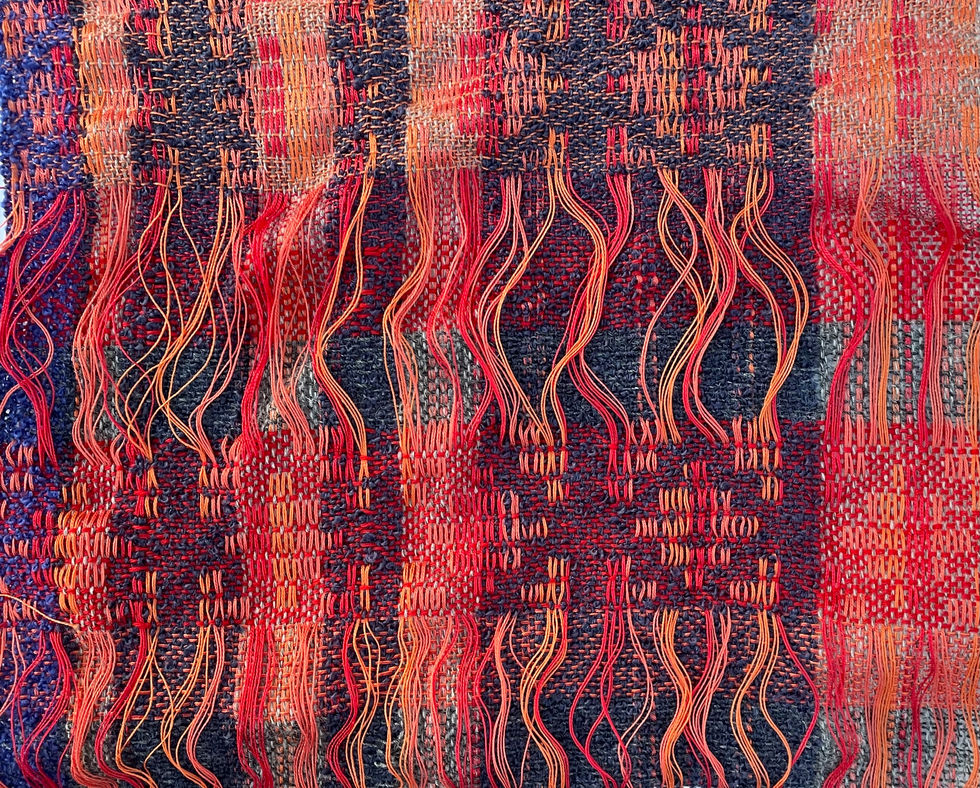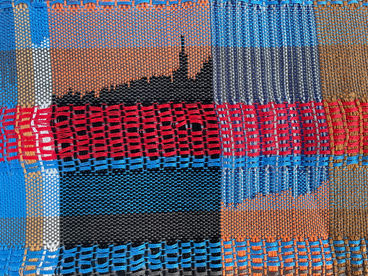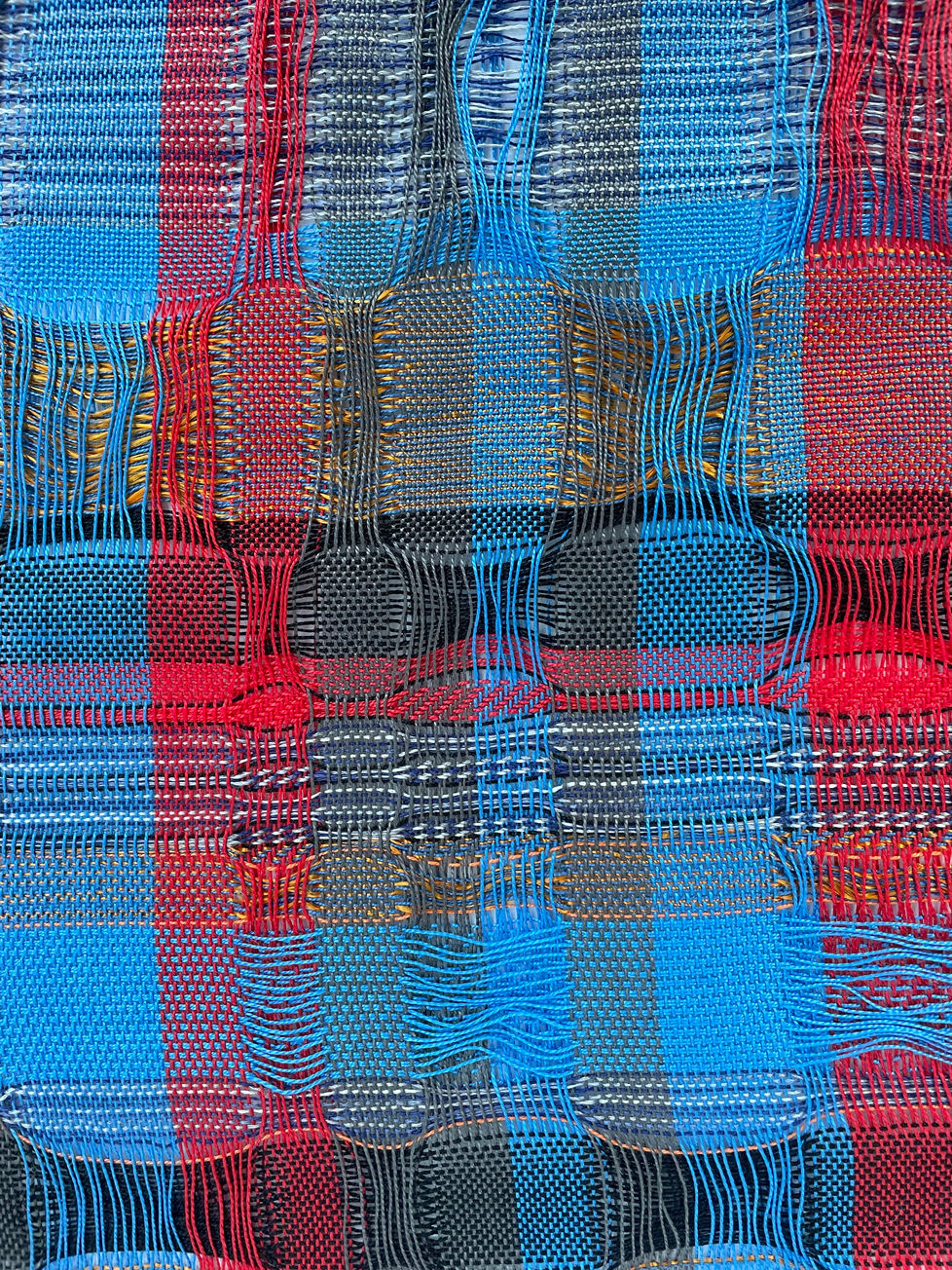
Portfolio
As a recent graduate in Textile Design and Innovation from Loughborough University, my focus has been on woven textiles. Throughout my degree, I explored the intersection of traditional craftsmanship and contemporary design, taking influence from cultural and environmental topics. In my final year, I created dynamic and diverse responses that reflect my passion for thoughtful and innovative design. I am driven by my commitment to sustainability and storytelling through textiles, and I aim to bring these values into the interior design and fashion industries.
Final Year
And Then There Were None
Introduction
"And Then There Were None" embarks on a visual journey through the breathtaking beauty, rich diversity, and solidarity found within the Leuser Rainforest, a jewel of Asia's biodiverse landscapes. This project serves as a poignant reminder of the urgent need for conservation to safeguard this ecosystem, its inhabitants, and cultural traditions. Against formidable adversaries such as the palm oil industry and illegal wildlife trade, which relentlessly exploit the forest's resources, the project highlights the importance of protecting and preserving this irreplaceable natural wonder for future generations.
Concept & Research
Inspired by a visit to the Natural History Museum and captivated by the imagery in "International Wildlife Photographer of the Year," featuring stunning wildlife depictions, I unearthed a passion for wildlife photojournalism, particularly drawn to its emotive power. My exploration led me to Paul Hilton’s works, whose conservation photojournalism, notably his extensive portfolio of "photo essays" documenting the challenges facing the Leuser ecosystem in Sumatra, resonated deeply with me.
The lush rainforests of Sumatra, Indonesia, once thrived with diverse flora and fauna, including critically endangered species like the Sumatran tiger, orangutan, and elephant. However, deforestation, driven by the palm oil industry and illegal wildlife trade, has caused a catastrophic decline in biodiversity and severely impacted the livelihoods of local communities. At the heart of this crisis is the Leuser Ecosystem, a UNESCO World Heritage Site and one of the last intact rainforests in Southeast Asia.
The demand for palm oil, found in countless consumer products, has led to widespread deforestation and habitat destruction within the Leuser Ecosystem. Simultaneously, the illegal wildlife trade, fuelled by demand for exotic pets, traditional medicines, and luxury goods, has decimated endangered species populations, disrupting the ecological balance.
In this context, conservation efforts must also preserve traditional weaving practices amidst modern challenges. Understanding the significance of traditional weaving, wildlife, and habitats underscored the critical role of conservation in safeguarding cultural heritage and the ecosystem, with large rainforests serving as vital "carbon sinks."
Development of Ideas
The project began with assembling a collection of highly emotive imagery related to the Leuser Ecosystem wildlife and the impact of illegal wildlife trade and palm oil deforestation. From there, I created emotionally driven drawings and paintings, curating key shapes, patterns, textures, and lines symbolic of the subject matter. This explorative process developed a colour palette with intense vibrancy and deep darker pigments.
Primary research included a trip to the Taxidermy Emporium Ltd. in Derbyshire, where I photographed and felt various animal skins and objects (pre-1940), enriching my material research.
I then explored the traditional design of authentic Sumatran "Ulos" fabrics to connect this conservation element to the project. Using the shapes, patterns, and stripe compositions as inspiration, I created paintings using my colour palette. Experimenting with coloured patterning and stripe layouts, I combined elements of emotive and traditional patterned paintings. This strategized approach helped me use colour thoughtfully to evoke traditional Ulos designs and native animal prints. I tested how these design ideas would sit on a fashion form, experimenting with scale and composition to visualise my final runway collection.
A crucial part of this project was contrast and maximalism. The outcomes needed to be eye-catching, so I made design choices in line with this: a colour palette with vibrancy and darkness, imagery with fluid animal skins/prints and rigid Ulos patterns. My material choice reflected this, using 2/16 mercerized cotton, which connected with traditional Ulos weavers, alongside textured, heavier yarns like wool, mohair, cotton gimp, and chenille to represent native animals.
Aims of the Project
The aim was to design for a Spring Haute Couture context, with high-end and luxurious final outcomes representing the valued wildlife and communities of the Leuser and the refined beauty of the animals and traditional "Ulos." I intended to produce 12 finished samples from 3 separate warps, with natural materials and bold colour combinations.
-
The first warp will explore layers of materials and "space" dyeing using a double extra warp of cotton, chenille, and wool for a highly textured and dense fabric.
-
The second warp will focus on visual pattern effects with clever use of colour in the warp following an "echo" threading plan for a finer fabric for draping.
-
The final warp will combine elements of the first and second warps, using an extra warp draft with materials from chenille to silk and a carefully considered point threading plan for heavy, graphic patterning.
Final Project
And Then There Were None

Final Year
Femme Fatale
Introduction
"Femme Fatale" is inspired by the French term for a seductive woman who causes distress, reflecting the ongoing issue of male violence against women. With 125 women killed by men in the UK from March 2021 to 2022, urgent change is needed. Drawing from Egyptian and Japanese history, the collection features Cleopatra VII of Egypt and Tomoe Gozen, a 12th-century samurai, redefining strength and elegance through a fusion of Western and Eastern ideologies.
Theme & Research
Inspired by the "Million Women Rise" movement, which highlights male violence against women, the collection addresses the ongoing battle for gender equality. It serves as "armor" for women fighting misogyny, drawing parallels with historic female warriors.
Development of Ideas
My research focused on Cleopatra's power and legacy, contrasted with Tomoe Gozen, a female samurai, to explore cultural diversity. Visits to the V&A Museum and the Royal Armouries deepened my study of Egyptian artifacts and Samurai armor, shaping my woven textile designs.
Aims of the project
This Womenswear Ready-to-Wear Collection aims to empower women with bold, fierce designs that evoke pride and proficiency. Through color and woven patterns, the garments will reflect the strength and resilience of historical female figures.

First Year
Delicate Matter

First Year
Graphic Abstraction

Second Year
Future






















































